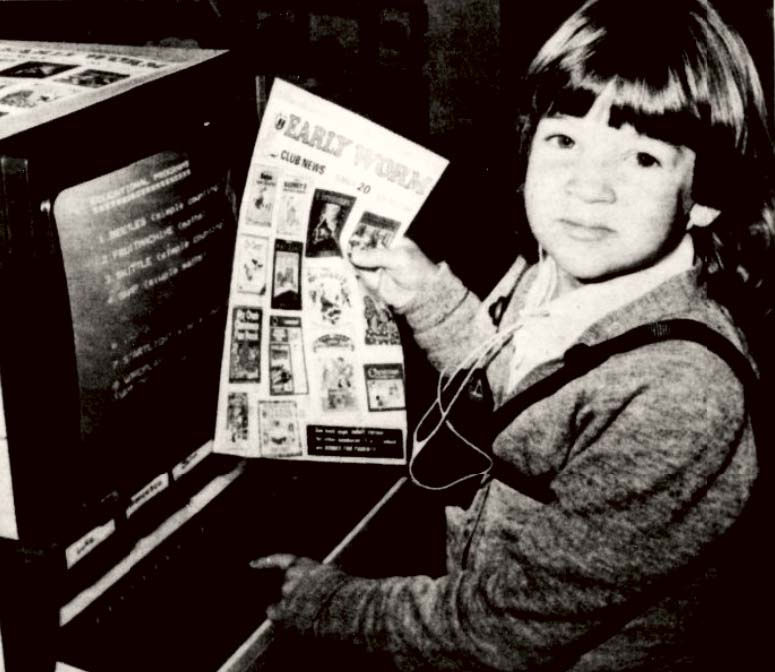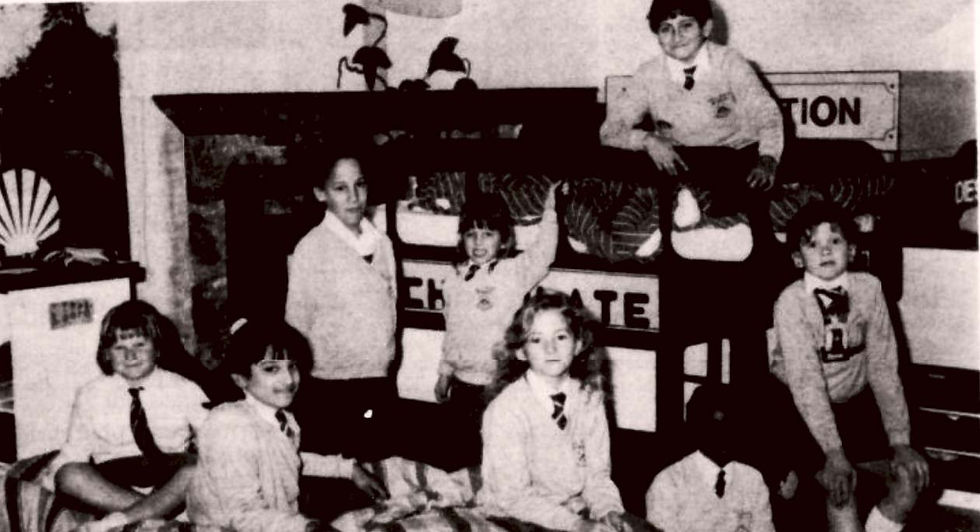1989: Cuckfield's innovative School for the deaf
- andyrevell

- Aug 3
- 3 min read
Mid Sussex Times November 10 1989
Claire Foley visits Mill Hall School at Cuckfield. Pictures by Colin Payne.
It was just a typical day at Mill Hall School in Cuckfield.
Hands shut up in the school assembly from children eager to answer questions – singing ran out from the music room and youngsters snatched the chance for a quick chat when the teachers back was turned.
It could have been a scene from any one of the many mid Sussex primary schools, but there was one major difference. All the children at Mill Hall are deaf.
The youngsters reading aloud to one another from books they had written themselves or hearing aids, and a microphone pinned to the teachers blouse was the only clue that she was giving her lesson to a group of profoundly deaf pupils.

It's all a long way from the misguided image of a silent world of the deaf, where children watch intently as a teacher frantically gestures with sign language. At Mill Hall, pupils are encouraged to listen and speak.
Headmaster Malcolm Bown cringes when he hears the all too common phrase "deaf and dumb”, particularly when it is used by some of the most well-educated people.
"It is a horrendously Victorian attitude," he says. "Apart from being extremely insulting, it is also nonsense as all deaf children are able to speak and hardly any are stone deaf."
Most of the children at Mill Hall have been deaf since birth, and have varying ability to hear. "We teach the children to use what hearing they have and in turn to speak," said Mr Bown.
"With the right hearing aid, every deaf child can be reached and many would have no need to attend a special school," said Mr Bown. He added that national statistics show that a staggering 70% of deaf children are fitted with the wrong hearing aids.
At Mill Hall three types of hearing aids are used– The children’s own aids which sit neatly behind the ear, a radio aid which can be connected to the teacher’s microphone, and a group hearing aid with which all the children are connected to a general frequency. This is particularly useful for class discussions and debates. With these highly technical devices, children can participate in all school activities.
Many of the pupils live in Cuckfield and the surrounding area, attending the school daily, but for others, Mill Hall is home.
"We accept children from all over the south, and even the Channel Islands," said Mr Bown.
He added that the youngsters are referred to Mill Hall by local authorities.
Fees are paid by the authority, but Mill Hall relies on fundraisers to provide cash for equipment and buildings.
"The school is a registered charity," said Mr Bown. “each year a committee raises between £60,000 and £100,000 which we couldn't do without."
Last year some of the money was spent on creating the most magical bedrooms a child could wish for. Each room has a theme of its own, and at night children can curl up in a smart sports car bed and dream of winning the Grand Prix, while others wake to the sight of magnificent animals roaming in the jungle.

"I firmly believe that deaf children must be in a stimulating environment. They will only speak if there is something to talk about," said Mr Bown.
With the right teaching and hearing equipment, there is no reason why deaf children cannot be as successful as any other young person. Past Mill Hall students include an accountant living in Brighton and Durham University graduate Rachel Peacock.






Comments